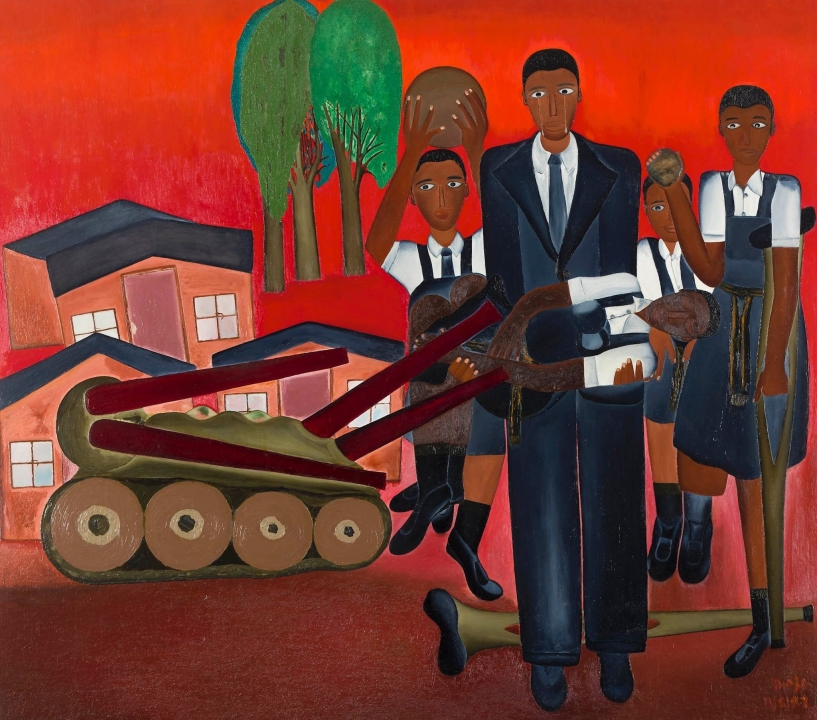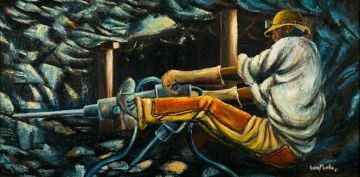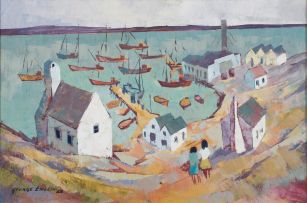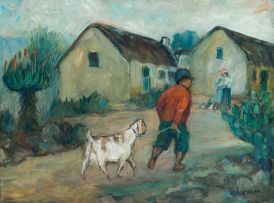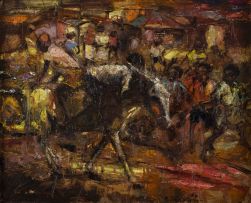1976 Riots
Alfred Thoba
Incl. Buyer's Premium & VAT
About this Item
signed and dated 13/8/87
Notes
Desmond Tutu, in his foreword to Sue Williamson's seminal book on art during the apartheid era, says: 'There can be no doubt in my own mind that the arts play a crucial role in the life of a people'.1 In this ground-breaking book, Alfred Thoba is accorded a full page and this is the painting that was selected to illustrate his contribution to the struggle for democracy in South Africa. The accompanying text by Sue Williamson is reproduced in full here:
'I used to paint love stories all the time - I had no violence in my work - but one day I thought: let me paint the riots.'
Alfred Thoba's painting 1976 Riots reminds us of the scores of news shots of that year when the schoolchildren of Soweto defied the authorities with such devastating results.
The story of the making of this painting spotlights another aspect of black life in Johannesburg. Officially, under the Group Areas Act, blacks may live only in black areas, like Soweto. In practice thousands are living illegally in central Johannesburg, but as exploited fugitives.
'I started the painting in a room in Yeoville. The owner said I couldn't use the room as a studio, so I had to carry the picture to Orange Grove and from there to Jeppe Street.' Thoba carried the large picture at night to avoid unwelcome attention.
'In Jeppe Street I could stay only a week, then I moved to Berea Boulevard.' Thoba is talking about places many kilometres apart. 'I convinced the caretaker to give me a small room on the roof ... I worked very hard on the picture. When I finished I cried a lot. Each time I looked at it I cried. The cops wanted to see it. Luckily the day they came in the picture was covered. I'm sure they were told about it. I had to take it to a certain businessman in High Point [apartment block] to keep it safe for me.'
1976 Riots, full blooded and poignant, was a high point of the 100 Artists Protest Detention Without Trial Exhibition at the Market Gallery in January 1988. The cops did see it after all. The exhibition was organised by the Detainees' Parents Support Committee, and when the DPSC was restricted on 27 February, the police came to the gallery and photographed all the work.2
1 Sue Williamson, Resistance Art in South Africa, St Martin's Press, New York, 1990, page 7.
2 Ibid, page 106.
Literature
Sue Williamson, Resistance Art in South Africa, David Phillip, Cape Town, 1989, unpaginated, illustrated in colour.
